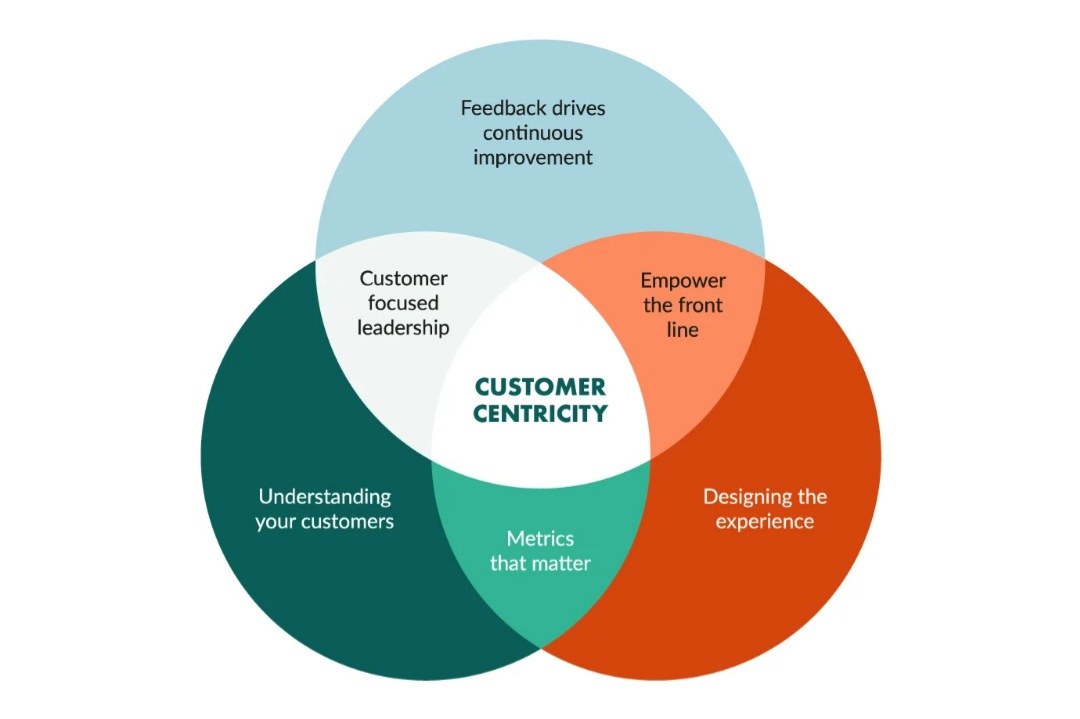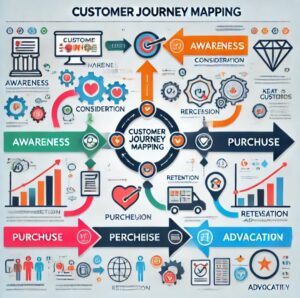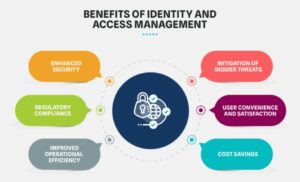
In a Rapidly Changing Marketplace, How Often Do You Reassess Your Customer Strategy and Product Offerings to Unlock Growth?
In today’s fast-paced business environment, a well-defined customer strategy is not just a nice-to-have; it’s essential for success. You must be pro-active versus reactive. As we navigate through 2024 into 2025, the significance of this strategy has never been more critical. Here are several reasons why:
1. Changing Consumer Expectations
Today’s consumers are more informed and discerning than ever before. They expect personalized experiences, seamless interactions, and rapid responses. A solid customer strategy allows businesses to meet these evolving expectations and stand out in a crowded marketplace.
2. Data-Driven Decision Making
In 2024 and “too infinity and beyond”, the reliance on data analytics continues to grow. Organizations that effectively leverage customer data can gain valuable insights into preferences, behaviors, and trends. A customer strategy that incorporates data-driven decision-making enables companies to make informed choices, leading to better product offerings and marketing campaigns.
3. Increased Competition
With the rise of digital transformation, competition is fiercer than ever. Companies that prioritize customer strategy can differentiate themselves by creating unique value propositions and delivering exceptional customer experiences. This not only attracts new customers but also fosters loyalty among existing ones.
4. Focus on Retention and Loyalty
Are you talking to ypur customets? F2F, celebrating them by yaking them out to dinner, tickeys to a show, ball-game or NBA or MLB game? in petson, not texting, chat bots, emails but gace-to-face. You better! Acquiring new customers is often more costly than retaining existing ones. A customer strategy that emphasizes retention and loyalty helps businesses reduce churn rates and maximize customer lifetime value. In 2024, organizations must invest in nurturing relationships to ensure long-term success.
Customer Experience Strategy
Implementing a customer strategy places customer service at the forefront of daily operations. This strategy is designed to put the customer first in all aspects, from creating procedures to conducting daily operations and training new employees.
A channel strategy, on the other hand, outlines how a vendor moves a product or service through the commerce chain to the end customer. Vendors may embrace direct or indirect sales channels or a combination of both, enhancing their reach and effectiveness.
Customer Strategy Examples
5 Customer Experience Strategies That Work
Have you ever lost a customer to a competitor and didn’t know why they left? A robust customer experience strategy can help you retain more customers and prevent them from defecting to competitors. Research by Harvard Business Review found that companies that skillfully manage and execute customer experience strategies reap enormous rewards. They achieve higher customer satisfaction, reduced churn, increased revenue, and greater employee satisfaction.
In the face of rising competitive pressures, creating a highly differentiated customer experience can help turn dissatisfaction or indifference into delight. Customers appreciate being WOW’d and having their expectations exceeded.
Creating a unique customer experience is one of the best ways to achieve sustainable growth, particularly in stagnating industries. If a telecommunications company, utility provider, or insurance firm can develop a distinctive customer experience that converts dissatisfaction into delight, it will garner vocal advocates both online and offline, gain market share, and generate revenue.
As business leaders, board members, and decision-makers, it’s essential to continually evaluate your customer strategy and product offerings. In a rapidly changing marketplace, regular reassessment will not only help you keep pace with consumer expectations but also position your organization for growth and success.
In today’s dynamic business landscape, customer strategy has emerged as a pivotal element for organizations aiming to thrive and adapt to ever-evolving market demands. As a seasoned sales development representative with years of experience in B2B sales, I have witnessed firsthand the transformative power of a well-defined customer strategy. In this article, I will explore what customer strategy is, provide relevant examples from innovative companies, and discuss its significance in 2024.
What is Customer Strategy?
Customer strategy is a comprehensive approach that organizations adopt to understand, engage, and retain their customers effectively. It encompasses various elements, including customer segmentation, value proposition, customer journey mapping, and feedback mechanisms. Essentially, a customer strategy aligns a company’s products and services with the needs and preferences of its target audience, ensuring that every touchpoint adds value and enhances the customer experience.
- Customer Segmentation: Identifying distinct groups within the target market based on characteristics such as demographics, behavior, and needs. This enables tailored marketing and sales efforts that resonate with specific audiences.
- Value Proposition: Articulating the unique benefits and value that a company’s products or services offer. A strong value proposition clearly communicates why a customer should choose a specific product over competitors.
- Customer Journey Mapping: Visualizing the customer’s experience with a brand across various touchpoints. This helps identify pain points, opportunities for engagement, and areas where improvements can be made to enhance the overall experience.
- Feedback Mechanisms: Establishing channels for customers to provide feedback, ensuring that their voices are heard. This can include surveys, reviews, and direct communication, allowing businesses to adapt and improve based on customer input.
Essentially, a customer strategy aligns a company’s products and services with the needs and preferences of its target audience, ensuring that every touchpoint adds value and enhances the customer experience.
Definition
According to a report by McKinsey & Company, customer strategy can be defined as “the set of actions an organization takes to acquire, retain, and maximize customer value.” This definition highlights the importance of not only attracting new customers but also nurturing existing relationships to foster loyalty and advocacy.
How Customer Strategy Drives Sales for Sales Representatives
As a sales representative—whether in the role of Account Executive, Account Manager, Sales Development Representative, or Business Development Representative—leveraging a well-defined customer strategy can significantly drive sales and enhance overall performance. Here’s how:
As a sales representative—whether in the role of Account Executive, Account Manager, Sales Development Representative, or Business Development Representative—leveraging a well-defined customer strategy can significantly drive sales and enhance overall performance. Here’s how:
1. Enhanced Understanding of Customer Needs
By implementing a customer strategy, sales representatives can gain deep insights into customer preferences and pain points. This understanding allows them to tailor their pitch and offerings to address specific needs. For example, in my experience, knowing that a potential client in healthcare values compliance and patient care can guide me in highlighting relevant features of our products that enhance those aspects. This targeted approach leads to more meaningful conversations and increased conversion rates.
2. Personalized Sales Approaches
Customer segmentation allows sales representatives to categorize leads based on shared characteristics, such as industry, company size, or buying behavior. By tailoring communication and sales tactics to fit each segment, I have found that prospects respond more positively. For instance, if targeting tech startups, emphasizing agility and innovative features may resonate more than a focus on legacy support. Personalization not only improves engagement but also fosters a sense of connection and trust with potential clients.
3. Effective Value Proposition Communication
A clear and compelling value proposition is central to customer strategy. As a sales representative, articulating this value in a way that directly addresses the needs and pain points of the customer can significantly enhance sales efforts. I have seen that when I align our product’s benefits with the specific challenges a client faces—such as cost reduction or increased efficiency—it resonates more strongly and positions me as a solution provider rather than just a salesperson. This shift in perspective can lead to higher sales and stronger client relationships.
4. Navigating the Customer Journey
Understanding the customer journey enables sales representatives to identify critical touchpoints where engagement can be maximized. For example, if a client has engaged with our marketing content but has not yet made a purchase, I can follow up with relevant information or resources that address their concerns. By guiding prospects through their journey, I have successfully nurtured leads that may have otherwise gone cold.
5. Utilizing Feedback for Continuous Improvement
Incorporating feedback mechanisms into the sales strategy allows representatives to gather insights from customers about their experiences and expectations. Actively seeking feedback not only demonstrates a commitment to customer satisfaction but also provides valuable data that can inform future sales strategies. For instance, I have implemented feedback from previous clients to refine my sales pitch, focusing more on the features that resonated well in past discussions, which ultimately led to increased sales.
6. Building Long-Term Relationships
A strong customer strategy emphasizes relationship building, which is crucial for long-term sales success. By focusing on customer retention as much as acquisition, sales representatives can create loyal clients who are more likely to make repeat purchases and refer others. I have learned that following up after a sale to ensure satisfaction and offering ongoing support can turn a one-time buyer into a long-term partner. These relationships often lead to upselling opportunities and increased customer lifetime value.
Examples of Customer Strategy
These examples illustrate how various companies across different industries I have had the honor of serving in one capacity 9r another, as an employee, as a client, a partner, or a customer where I successfully implement customer strategies to enhance engagement, satisfaction, and loyalty to drive brand awareness and the bottom line crrating yrust and value. Each organization has been adapted to its approach based on its unique market and customer needs, showcasing the importance of understanding and responding to customers in today’s competitive landscape.
1. Roadmunk (part of Tempo Software)
Roadmunk, unique value proposition / sales statement) a software company specializing in roadmapping solutions, demonstrates the importance of user feedback in shaping its product offerings. In my interactions with their team, I’ve seen how they actively solicit customer input to refine their features and enhance user experience. This customer-centric approach has helped Roadmunk build a loyal user base and foster long-term relationships.
Roadmunk. (2024). “The Importance of User Feedback in Product Development.” Retrieved from Roadmunk.
2. New Horizons Computer Learning Centers
In my experience, New Horizons Computer Learning Centers have effectively utilized a customer strategy focused on providing tailored training solutions. By offering customized learning paths and flexible scheduling options, they cater to the unique needs of individual learners and corporate clients. This approach not only enhances customer satisfaction but also positions them as a leader in the rapidly evolving tech training industry.
New Horizons Computer Learning Centers. (2023). “Transforming Learning: A Customer-Centric Approach.” Retrieved from New Horizons.
3. Viral Nation
Viral Nation ( unique value proposition / sales statement) hass carved a niche in the influencer marketing space by focusing on data-driven strategies to connect brands with the right influencers. Their customer strategy emphasizes understanding the target audience’s p)references and leveraging analytics to create impactful campaigns. From my perspective, this not only drives brand engagement but also ensures that clients achieve measurable results.
Viral Nation. (2023). “Data-Driven Influencer Marketing Strategies.” Retrieved from Viral Nation.
4. JML Optical
JML Optical exemplifies a customer-first approach by prioritizing transparency and education in the eyewear market. They provide detailed information about their products and actively engage with customers through personalized consultations. In my experience, this dedication to customer service and education fosters trust and encourages repeat business.
JML Optical. (2024). “Customer Education and Transparency in Eyewear.” Retrieved from JML Optical.
5. Eastman Kodak
Kodak has made a significant transformation by embracing digital innovation while retaining its legacy in imaging. Their customer strategy involves integrating customer feedback into product development, ensuring they meet the demands of both traditional photography enthusiasts and modern digital users. This adaptability, in my view, highlights the importance of listening to customers in a changing landscape.
Eastman Kodak. (2023). “Embracing Digital Innovation.” Retrieved from Kodak.
6. Rochester Regional Health
Rochester Regional Health focuses on patient-centered care, making it a prime example of a customer strategy in the healthcare sector. By utilizing patient feedback to improve services and enhance the overall healthcare experience, they demonstrate a commitment to meeting the needs of their community. In my experience, this approach not only improves patient satisfaction but also strengthens community ties.
Rochester Regional Health. (2024). “Patient-Centered Care Initiatives.” Retrieved from Rochester Regional Health.
7. IC Medical
IC Medical focuses on enhancing patient care through innovative medical solutions. Their customer strategy revolves around understanding the unique needs of healthcare providers and patients, ensuring that their products are designed with user experience in mind. By collecting feedback from medical professionals and incorporating it into product development, IC Medical effectively addresses specific pain points in the healthcare system.
Reference: IC Medical. (2023). “Patient-Centric Innovation.” Retrieved from IC Medical
8. University of Rochester Simon Business School
The Simon Business School employs a customer strategy that emphasizes personalized education and career development. They tailor their programs and offerings based on student feedback and industry trends, ensuring that graduates are well-prepared for the job market. The school actively engages with alumni and employers to understand their evolving needs, fostering relationships that benefit current students.
Reference: University of Rochester Simon Business School. (2024). “Tailored Education for Future Leaders.” Retrieved from Simon Business School
9. Fish Innovations Enterprises
Fish Innovations Enterprises utilizes a customer strategy focused on sustainability and community engagement. By involving customers in the development of eco-friendly products and practices, they create a sense of ownership and loyalty among their user base. Their commitment to transparency and customer involvement in sustainability initiatives strengthens relationships with environmentally conscious consumers.
Reference: Fish Innovations Enterprises. (2023). “Sustainable Solutions Through Customer Collaboration.” Retrieved from Fish Innovations
10. ADP
ADP has a well-defined customer strategy centered on providing comprehensive HR solutions tailored to the needs of diverse businesses. They utilize data analytics to understand client pain points, offering customized solutions that address specific industry challenges. Their focus on delivering exceptional customer service and support helps to build long-term relationships with clients.
Reference: ADP. (2024). “Personalized HR Solutions for Every Business.” Retrieved from ADP
11. Heineken
Heineken’s customer strategy involves engaging consumers through innovative marketing campaigns and product personalization. They utilize data analytics to understand consumer preferences, allowing them to tailor products and experiences to different markets. Heineken also actively engages with customers through social media and events to foster brand loyalty and community.
Reference: Heineken. (2024). “Brewing Success Through Customer Engagement.” Retrieved from Heineken
12. goeasy
goeasy employs a customer strategy that focuses on financial inclusivity. They tailor their lending solutions to meet the needs of underserved markets, ensuring that their products are accessible and user-friendly. By providing personalized customer support and financial education, goeasy builds trust and fosters long-term relationships with clients.
Reference: goeasy. (2023). “Empowering Customers Through Financial Solutions.” Retrieved from goeasy
13. Goldman Sachs
Goldman Sachs implements a customer strategy that prioritizes client relationships and customized financial services. They leverage technology to offer personalized investment solutions and financial advice, focusing on understanding individual client goals. Their commitment to transparency and accountability enhances trust among their high-net-worth clients.
Reference: Goldman Sachs. (2024). “Client-Centric Financial Solutions.” Retrieved from Goldman Sachs
14. F5
F5 focuses on delivering secure and reliable application services. Their customer strategy emphasizes understanding the needs of IT professionals and businesses, offering tailored solutions that enhance application performance and security. F5 engages with customers through training and support programs, ensuring they maximize the value of their products.
Reference: F5. (2023). “Application Services Tailored for You.” Retrieved from F5
15. Deloitte
Deloitte employs a customer strategy that revolves around providing tailored consulting and advisory services. They utilize data analytics and market insights to understand client needs, offering solutions that drive business transformation. Their commitment to building long-term relationships through continuous engagement helps foster client loyalty.
Reference: Deloitte. (2024). “Consulting with a Customer-Centric Approach.” Retrieved from Deloitte
16. Paycom
Paycom focuses on delivering user-friendly HR and payroll solutions. Their customer strategy involves understanding the specific needs of businesses of all sizes and providing personalized support throughout the implementation process. By prioritizing customer service and continuous feedback, Paycom fosters strong client relationships.
Reference: Paycom. (2023). “HR Solutions Built Around You.” Retrieved from Paycom
17. Comcast
Comcast employs a customer strategy that emphasizes improving customer experience through technology. They gather feedback through various channels, including surveys and social media, to enhance their service offerings. By investing in customer support and engagement initiatives, Comcast aims to reduce churn and improve satisfaction.
Reference: Comcast. (2024). “Transforming Customer Experience in Telecommunications.” Retrieved from Comcast
18. Ford
Ford’s customer strategy involves understanding consumer preferences and trends in the automotive market. They leverage data analytics to tailor their vehicle offerings and marketing campaigns. Ford also engages customers through digital platforms and community initiatives, fostering loyalty and enhancing brand perception.
Reference: Ford. (2024). “Driving Innovation Through Customer Insights.” Retrieved from Ford
19. SMS Equipment
SMS Equipment focuses on customer-centric solutions in the heavy equipment sector. They engage with clients to understand their operational challenges and offer tailored support and maintenance solutions. By prioritizing customer relationships and feedback, SMS Equipment enhances client satisfaction and retention.
Reference: SMS Equipment. (2023). “Solutions Tailored for Your Heavy Equipment Needs.” Retrieved from SMS Equipment
20. iHeartMedia
iHeartMedia utilizes a customer strategy that emphasizes personalized marketing solutions for advertisers. By leveraging audience data and insights, they offer targeted advertising options that resonate with specific demographics. Their commitment to understanding both advertisers’ and listeners’ needs helps build effective campaigns.
Reference: iHeartMedia. (2024). “Personalized Advertising Solutions for Every Brand.” Retrieved from iHeartMedia
21. Citrix
Citrix focuses on providing innovative technology solutions tailored to customer needs in the digital transformation space. They engage with clients to understand their unique challenges and develop customized solutions that drive efficiency and productivity. By prioritizing customer feedback, Citrix continuously improves its offerings.
Reference: Citrix. (2023). “Tailored Technology Solutions for Your Business.” Retrieved from Citrix
22. CommScope
CommScope employs a customer strategy that emphasizes collaboration and innovation in telecommunications. They work closely with customers to understand their needs and provide tailored solutions that enhance network performance. By investing in customer support and ongoing engagement, CommScope strengthens its relationships with clients.
Reference: CommScope. (2024). “Building Tomorrow’s Networks Together.” Retrieved from CommScope
Conclusion
In conclusion, a well-defined customer strategy is not just beneficial for organizations; it is essential for sales representatives looking to drive sales effectively. By enhancing the understanding of customer needs, personalizing approaches, communicating a strong value proposition, navigating the customer journey, utilizing feedback, and building long-term relationships, sales professionals can significantly impact their success. As we move further into 2024, the ability to adapt and implement these strategies will be crucial in fostering customer loyalty and driving growth in an increasingly competitive market.
Embracing customer strategy not only positions sales representatives as trusted advisors but also empowers them to deliver value that resonates with customers, leading to sustainable sales success.
Additional Topics to Consider
Keep in mind, if I haven’t mentioned already, or ypu need to crrate teams to address focus groups every month to the 3volving neefs of ypur business.
1. Cross-Functional Collaboration: Emphasize the importance of having teams from various departments, such as sales, marketing, customer service, product development, and finance, collaborate on customer strategy initiatives. This cross-functional approach can provide diverse perspectives and insights, leading to more holistic solutions.
2. Feedback Mechanisms: Encourage companies to establish formal feedback mechanisms where employees can share their observations and suggestions regarding customer interactions. This can include regular meetings or focus groups to discuss customer insights and potential improvements.
3. Customer Journey Mapping: Discuss the significance of mapping the customer journey to identify pain points and opportunities. This can help businesses understand how customers interact with their brand at each stage and tailor strategies accordingly.
4. Continuous Improvement: Highlight the need for a culture of continuous improvement. Customer strategy should not be static; it should evolve based on feedback, changing market conditions, and emerging trends. Encourage companies to be agile and responsive to new information.
5. Technology and Tools: Mention the role of technology and tools in supporting customer strategy. Customer Relationship Management (CRM) systems, data analytics tools, and feedback platforms can streamline processes and enhance decision-making.
https://www.tonemansblog.com/value-proposition-sanples/










